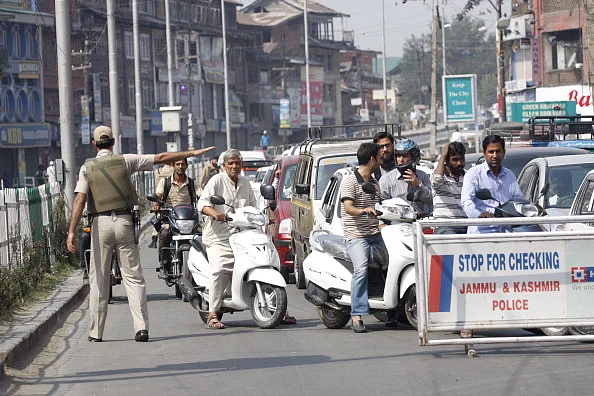If you land in Srinagar someday, come with earplugs, as you will hear the sound of sirens and horns coming from every side. However, you might remove them soon after the initial shock. This cacophony might even start to sound like a symphony to your ears once you get used to it. You will feel like you have landed in a world where people communicate through sirens and horns. It is a new sign language with Kashmiriyat touch.
Government officials and anyone who is someone in the vast security system of Kashmir constantly use sirens whenever their vehicles are on the road. Over the past five years, anyone who has been bestowed some significance by the government and has been allowed to have a government vehicle and security escort uses sirens. The blaring of sirens signifies that a high-ranking official is on the road, and others must obediently move aside to make way. People comply, cringing, complaining, and exchanging helpless looks with each other. The VVIP sirens are typically loud and distinct, sometimes making your heart race. If in a traffic jam, sirens don’t work, security escorts along with the VVIP start shouting, and some use whistles to add pressure on the road.
Once the VVIP traffic leaves, people incessantly honk at each other. Siren ka jawab Poo Poo se!
Why do people honk? Why do officials use sirens? Why? Ambulances using sirens is understandable, but why do officials do it? Why do people do it? Why do retired and former politicians do it? Where do they have to go? What is so important that everyone is going to miss it, prompting common people to honk and VVIP vehicles to use sirens? Why?
We know that in the past many years, nothing significant has happened in our part of the world except political leaders leaving one party and joining another. Some have announced the cessation from all “political activities.” For a time, I thought “cessation of all political activities” was a new party. It could be. But that doesn’t warrant sirens. Officials attend meetings every day to fix the date of another meeting; does that need sirens? The ECI is meeting again on July 10 to decide elections in J&K!
Engineer Rashid, who has had a great impact on the politics of the region, is now a topic of discussion. Those who did not even mention his name for the past five years have started a sort of campaign asking for his release. “Release Engineer Rashid” could be a new political party and a potent political force. But does that need sirens?
Amid these meetings, political activities and inactivities, one thing has not changed: the blaring of sirens and horns.
An abnormal response to an extremely abnormal situation is also a normal thing. Over the years, a government-approved VVIP siren has become a norm here, and people have heard so many of these sirens that they have adapted to the situation by honking their own vehicle horns even on empty roads. Just in case.
If a VIP moves in his fast-moving vehicle with a siren blaring, you have to stop. If security vehicles move with sirens, you have to stop. If someone important moves, you have to stop. To overcome all this, common people honk at each other to show they too exist and can make noise. They just keep their hand on the horn. Some now even honk on an empty road. If you don’t honk, you will feel something is missing. You will feel you have not done an important activity of the day. It is part of the daily exercise and existence.
One day, I asked a person why he was honking when the road was empty. He said this is the only thing that is free in the vehicle, so why shouldn’t he use it fully? I lost the argument with this Socrates on wheels then and there.

















